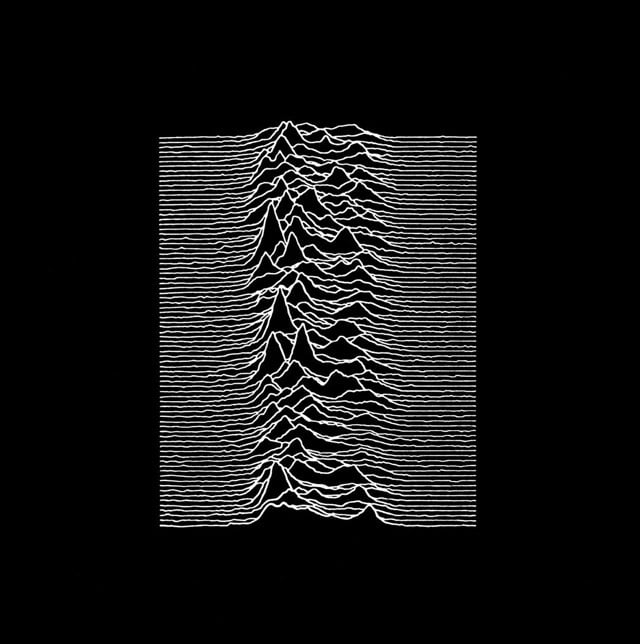The Origin of Joy Division’s Unknown Pleasures Album Cover Art

For Scientific American, Jen Christiansen tracks down where the iconic image on the cover of Joy Division’s Unknown Pleasures came from. Designer Peter Saville found the image, a stacked graph of successive radio signals from pulsar CP 1919, in a 1977 astronomy encyclopedia but it actually originated in a 1970 Ph.D. thesis.
By now I had also combed through early discovery articles in scientific journals and every book anthology on pulsars I could get my hands on to learn more about early pulsar visualizations. The more I learned, the more this descriptor in the 1971 Ostriker caption began to feel significant; “computer-generated illustration.” The charts from Bell at Mullard were output in real time, using analogue plotting tools. A transition in technology from analogue to digital seemed to have been taking place between the discovery of pulsars in 1967 to the work being conducting at Arecibo in 1968 through the early 1970’s. A cohort of doctoral students from Cornell University seemed to be embracing that shift, working on the cutting edge of digital analysis and pulsar data output. One PhD thesis title from that group in particular caught my attention, “Radio Observations of the Pulse Profiles and Dispersion Measures of Twelve Pulsars,” by Harold D. Craft, Jr. (September 1970).
When a star gets old and fat, it explodes in a supernova, leaving a neutron star in its wake. Neutron stars are heavily magnetized and incredibly dense, approximately two times the mass of the Sun packed into an area the size of the borough of Queens. That’s right around the density of an atomic nucleus, which isn’t surprising given that neutron stars are mostly composed of neutrons. A teaspoon of neutron star would weigh billions of tons.
A pulsar is a neutron star that quickly rotates. As the star spins, electromagnetic beams are shot out of the magnetic poles, which sweep around in space like a lighthouse light. Pulsars can spin anywhere from once every few seconds to 700 times/second, with the surface speed approaching 1/4 of the speed of light. These successive waves of electromagnetic pulses, arriving every 1.34 seconds, are what’s depicted in the stacked graph. Metaphorical meanings of its placement on the cover of a Joy Division record are left as an exercise to the reader.





Stay Connected